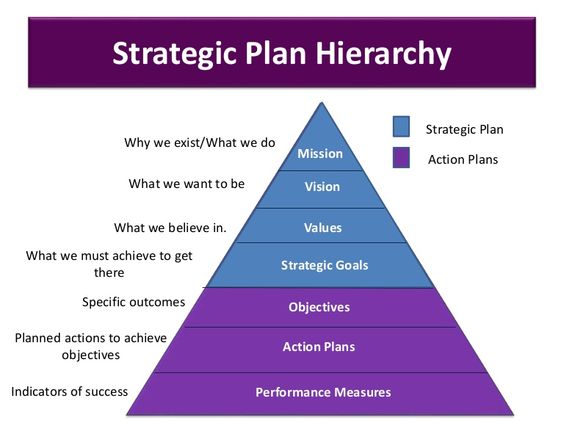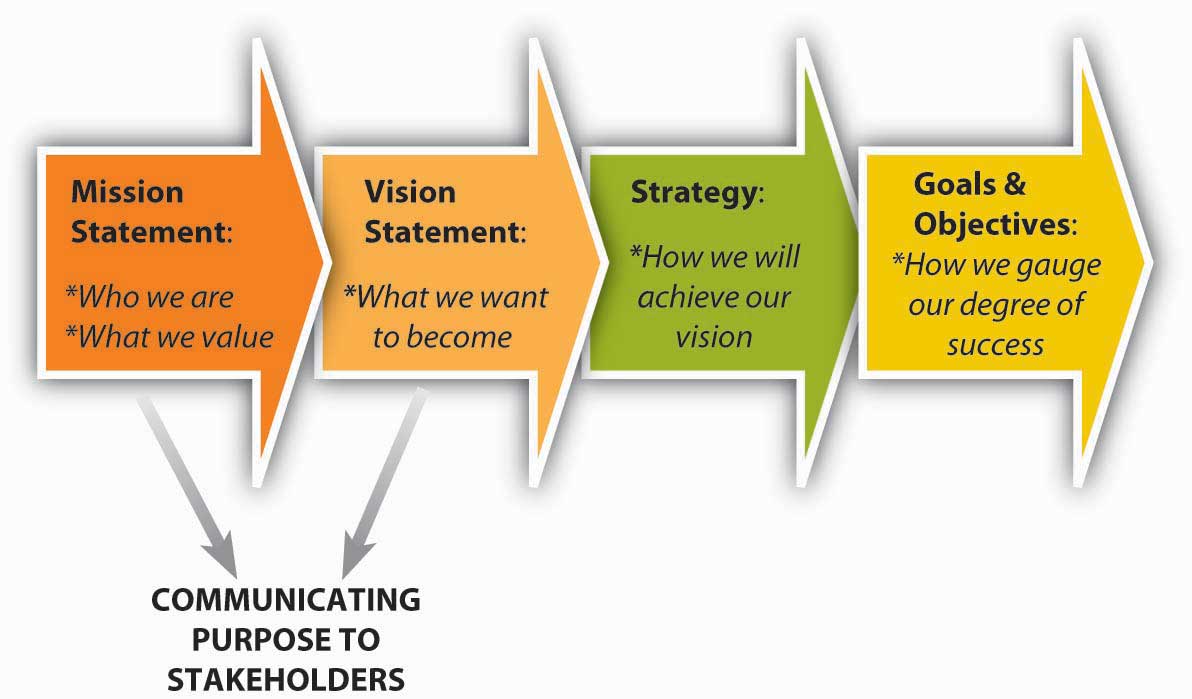Effective performance management is essentially a cascading process, which filters down from the highest to the lowest ranks in an organisation. This means that the organisation’s strategic plan (long term) forms the basis of the business plan (short term). This, in turn, provides the basis for team- and individual performance. Therefore, an integrated performance management system should be developed to ensure that each level of performance feeds efficiently into the next level.

Click here to view the video: Cascading Performance – How to set and align objectives.
Strategy
Before one can identify goals and objectives that will contribute to the achievement of a division’s vision and mission, one would have to start with the organisation’s vision, mission and values. These are the organisation's strategy. A very clearly-defined, top-down approach needs to be followed to ensure that individual goals and objectives tie in with team goals and objectives which, in turn, must tie in with division goals and objectives, which are linked to the organisation's goals and objectives.
An organisation's performance planning, typically, occurs in four plans.
Strategic plan – performance requirements over the next 3-5 years.
Business plan – performance priorities for the next year.
Division/department/team plan – the role of these entities in achieving the goals in the business plan.
Individual performance plans – what each person (staff or manager) will achieve in the next year.
All of these are what we refer to as the organisation’s strategy. Strategy is the process by which an organisation manages its internal resources and capabilities to take advantage of the opportunities in the external environment, whilst addressing the threats that are likely to impact on the company.
Definition of Strategy
Strategy can be defined as the long-term direction a company believes it should take, based on a combination of information available today and intelligent assumptions made by the management of the company.
Components of Strategy

The first step is to identify, understand and communicate your organisation's vision, mission and values. The vision, mission and values provide overall context for Strategic Performance Management. They are the standard starting point for any strategic planning activity.

The vision is the overall target of the organisation. It represents the ideal performance outcome in a perfect future where the organisation would like to see itself as its goal. Vision is seeing victory before it occurs – getting where you want to go.
The mission is the fundamental purpose of the organisation. It explains the ‘what’ and ‘how’. What products and services are produced and in which manner, in order to ultimately achieve the organisation’s vision.
The values can be defined as a set of beliefs or operating principles that guide organisational behaviour. This is when concepts like innovation, teamwork, respect, empathy, etc., influence the way in which the vision and mission are achieved.

Once you are clear on your organisation’s vision, mission and values, it is time to concentrate on your division/department’s vision and mission, which should be clearly aligned with, and supporting the achievement of, the overall vision and mission.
Good strategy is based on evidence (not subjective preference). Hence, strategy analysis, for gathering evidence, is a critical component of strategic performance management. Gathering the evidence for strategy implies an analytical process that has two important elements:
External analysis: The opportunities and threats that will arise in the future.
Internal analysis: The internal strengths and weaknesses of your department.
These two elements are commonly referred to as a SWOT analysis (Strengths, Weaknesses, Opportunities and Threats).
Now that you have a better understanding of the vision and mission aspects, you should be able to identify, articulate and communicate specific goals and objectives contributing to the achievement of the division’s vision and mission.
This stage of the performance management process formalises what the division wants to achieve.
Establishing Strategic Goals And Objectives For Your Division
Take the information from your strategy analysis (external and internal) and convert it into a set of goals and objectives that will drive your division over the next 12 months.
This process of formulating strategic objectives is often relatively simple. The process can be summarised as follows:
Key external issues and trends (opportunities and threats) – involve answering the question: ‘what do we intend to do about challenges that face us in the external environment'?
Internal skills and resources – involve asking the questions: ‘We now know what our strengths and weaknesses are. What do we intend to do about it to meet the challenges posed by the changing external environment?’
Analysis of the constraints – require asking the questions: ‘What constraints do stakeholders impose on our future operations?’ ‘What restrictions – physical, human and financial – will we have to operate under?’
Given that organisations suffer from resource constraints and that it is not feasible to achieve every strategic objective, a process must be established whereby a ‘wish list’ can be converted into an actionable list of strategic goals and objectives for every division. This can be achieved in two stages:
- Allocate priorities to alternative objectives. The method of allocating priorities will vary from division to division, depending on the requirements of each of the available resources.
- Management must ensure that the strategic objectives conform to the following appropriate attributes:
Specific: What is the exact scope of the objective? What is included and what is not?
What might be thought to be included but is being done by someone else?
What must be done with the outputs?
Measurable: What measures will be used to know that the objective has truly been reached? When, and how often, will the process be measured? What measurement tools can be used to determine success? What format must the output take?
Achievable: A delegated impossibility is still impossible! If there is doubt over whether the objective is achievable, then the first part of the process should either be to test feasibility or to identify what would have to be changed to make the rest feasible.
Realistic: What is a realistic task for a functional expert to undertake in a week may not be realistic for a junior joiner in a month. A series of roll-out meetings might be scheduled in two weeks, but clashes with public and personal holidays could mean that a month will be required. The test for a good objective is that it always deals with the reality of how long it will take to do things, rather than how long we would like it to take if we could ignore inconvenient facts.
Time bound: An objective without a clear specification of its timing priority is likely to be put at the bottom of the list. It will not get done. The simplest way to ensure that an objective will be achieved is to agree on a realistic deadline, even for objectives that are not time-critical for success.
This means that for every objective, a specific method of measuring or monitoring must be identified and agreed upon. For every objective, a specific timeframe for monitoring/completion must also be agreed upon. This will mean that your objectives are truly SMART.
Click here to download the SMART Goal Setting Template.